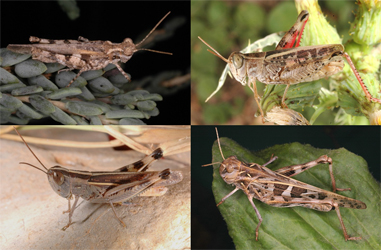Conservation plans can be greatly improved when information on the evolutionary and demographic consequences of habitat fragmentation is available for several codistributed species. Here it has been studied the spatial patterns of phenotypic and genetic variation among five grasshopper species that are codistributed across a network of microreserves but show remarkable differences in dispersal-related morphology, degree of habitat specialization and extent of fragmentation of their respective habitats in the study region. Results showed that genetic structure, but not phenotypic differentiation, was higher in specialist species linked to highly fragmented habitats in comparison with generalist taxa inhabiting less fragmented habitats. Patterns of phenotypic and genetic variability were not congruent across any studied species, indicating that they show idiosyncratic evolutionary trajectories and distinctive demographic responses to habitat fragmentation. Overall, this study suggests that conservation practices in networks of protected areas require detailed ecological and evolutionary information on target species to focus management efforts on those taxa that are more sensitive to the effects of habitat fragmentation. informacion[at]ebd.csic.es: Ortego et al (2015) Discordant patterns of genetic and phenotypic differentiation in five grasshopper species codistributed across a microreserve network. Mol Ecol 24 5796–5812 doi: 10.1111/mec.13426
http://onlinelibrary.wiley.com/doi/10.1111/mec.13426/abstract

 Las altas temperaturas están provocando que las lagunas y las marismas de Doñana pierdan agua rápidamente
Las altas temperaturas están provocando que las lagunas y las marismas de Doñana pierdan agua rápidamente




